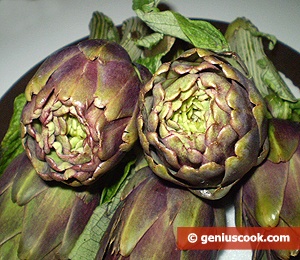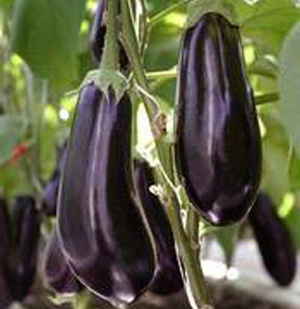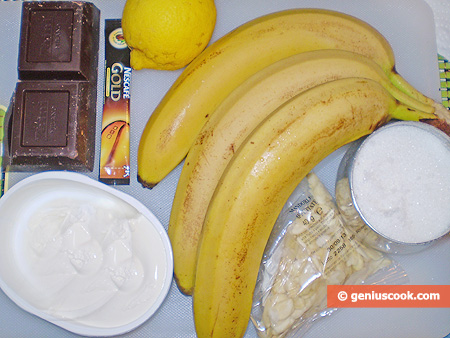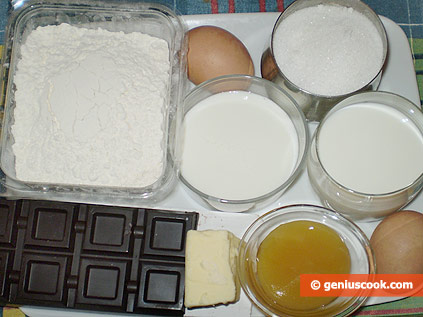Chocolate
 The cacao tree which seeds are actually used for making chocolate is a tropical plant growing in a band sometimes called “Cocoa Belt”. The cacao trees are shade-loving and grow best with some overhead shade. Cultivated plantations are located at elevations of around 400-600 m (1300-2000 ft). The cacao tree strives in fertile soil with high nitrogen and kalium content, moist but well-drained in rainy regions. This plant requires humid climate and the temperature of 25-28 C (77-82 F).
The cacao tree which seeds are actually used for making chocolate is a tropical plant growing in a band sometimes called “Cocoa Belt”. The cacao trees are shade-loving and grow best with some overhead shade. Cultivated plantations are located at elevations of around 400-600 m (1300-2000 ft). The cacao tree strives in fertile soil with high nitrogen and kalium content, moist but well-drained in rainy regions. This plant requires humid climate and the temperature of 25-28 C (77-82 F).
Cacao Tree
The fruit of cacao tree is called a cacao pod. Usually, young trees start bearing fruit in 3-5 years. The cacao pod weights about 200-800 g and the fruit is ripe in 5-6 months when it cracks open. During that time the cacao pod is turning from green to yellow and from red to orange.
History of Cacao
No one knows, who first tasted cacao, much less when or where the discovery took place. But it is a fact that the earliest cacao beverage, which was nothing like the modern chocolate was brewed by Maya Indians about 3 000 years ago. The first European to discover nutritious and healing powers of cacao beans was Christopher Columbus. Back in 1502, he accepted it as a gift from native people of Guanaja (Caribbean islands). Since that time chocolate began its successful journey through Europe and eventually this delicious exotic product won people’s hearts all over the world.
Substances Contained in Cacao
The major substance in cacao seeds is cacao butter that has glycerides of oleic (39-40%), stearic (34-35%), palmitic (23-24%), and linoleic (about 2%) acids. Unlike other vegetable oils, cacao oil hardens at room temperature and it is also the ideal fat in making many pastries.
Chocolate Making
Manufacturing process starts with removing beans from the pod and placing them to ferment for several days in order for the chocolate flavor to develop successfully. Then comes roasting at a temperature of 120-150 C (250-300 F) and grinding. It is followed by mixing with cacao butter, sugar and other ingredients in special tanks. Before pouring chocolate paste into moulds, it is allowed to cool. And finally moulding takes place when moulds are exposed to hot and cold temperatures and filled with chocolate. As soon as the chocolate paste is cool enough, it is taken out of moulds and is ready for packing.
Useful Properties of Chocolate
Chocolate is full of theobromine and caffeine that stimulate central nervous system, take off weariness, increase muscle efficiency and ease headaches. As chocolate has an aphrodisiac effect, it may influence our spirits. It also helps to improve the overall body tonicity and releases stress.
That’s why it is beneficial for pregnant women as pregnancy is actually a long-lasting stress. Women who eat chocolate during their pregnancy are likely to give birth to calmer and less stress-exposed children. Chocolate is a rich source of glucose that activates brain cells and promotes brainwork. But that doesn’t limit useful properties of chocolate. It helps to reduce high blood pressure. Remember that dark chocolate is healthier than the white one.
Moreover, chocolate reduces the risk of heart diseases and normalizes blood vessels function. Chocolate contains important compounds called flavonoids that improve glucose metabolism in human body. Bitter dark chocolate has very high flavanoid content.
Also, consuming dark chocolate is a good way to get heart-protective antioxidants. However, milk brings their effects to nothing. Moreover, due to antibacterial substances contained in the shell of cacao-beans, chocolate protects teeth from destruction and dental plaque and prevents dental caries.
Does Chocolate Make You Fat?
There is a conventional wisdom about chocolate being bad for our figure. But chocolate isn’t contraindicative to people who care about their weight. You just have to pick bitter chocolate with not less than 60% cacao content. This chocolate has less calories, sugar and cacao-oil. And it goes without saying that you shouldn’t eat a lot of chocolate.
Chocolate is Beneficial to our Health
The recent studies show that chocolate may be healthier than it seems, and some people even need to consume it for medical purposes. The bitterer the chocolate taste, the more polyphenol it offers.
White and Dark Chocolate
White chocolate lacks all useful properties of dark chocolate. It contains milk, and milk is known to neutralize the useful effects of many substances. As chocolate has the oxalic acid, people suffering from kidney stone disease should avoid excessive chocolate consumption.







